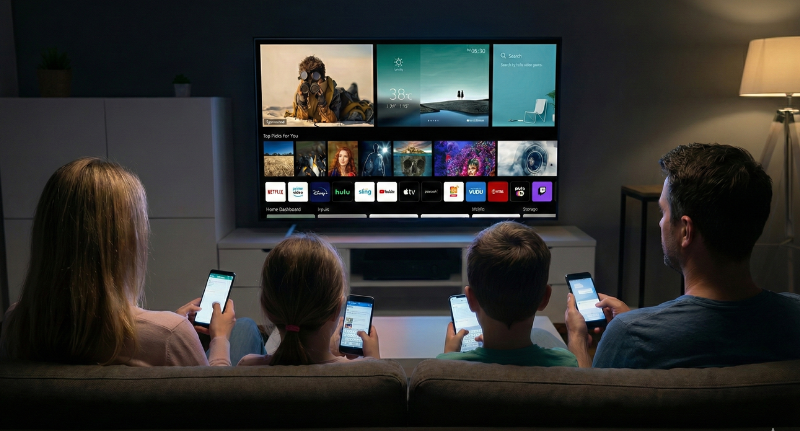A global-first study from Samsung Ads, OMG Australia and Amplified Intelligence has revealed that Connected TV (CTV) home screen ads deliver 2.5x more active attention than linear TV and generate just one-third the wastage of scrollable social platforms.
Across 20+ OMG brands, the research tracked how real people engage with ads in their natural environments.
The findings reinforce what attention researchers have been signaling for years: the device itself is the strongest driver of attention, ahead of platform, format, context and creativity.
Home screen leads the attention economy
The study found that audiences view 76% of CTV home screen ads, with 59% of that being “active attention” eyes on both the screen and the ad.
By comparison:
• Linear TV drives 23% active attention
• Large-format outdoor delivers 38% lower active attention
• Scrollable socials lose 80% of ad impressions to total inattention
Usage of Samsung Ads’ native home screen format has doubled in the last year, driven by new categories such as automotive, travel, food delivery, insurance and utilities entering the space.
‘The hierarchy of attention has held’
Speaking to Mediaweek, OMG’s Chief Product Officer Alex Pacey said the study reinforces what early attention research has shown that attention is largely shaped by where an ad appears, before anything else.
“It’s been really interesting to see how well the hierarchy of attention device, platform, format has held. When it first came out, it turned a lot of thinking on its head. We’d previously assumed creative and context powered attention.”
He said screen size continues to play a defining role:
“The impact of scale – the size of the screen – just remains so strong. We’ve cemented how important the real estate on that screen is.”
Comparing Samsung’s home screen with VOD and linear results, Pacey said the next phase is unpacking why the differences occur.
“Are the differences purely due to the size of the ad format, or because you’re paying and therefore paying more attention? These are things we can infer for now, but we need to understand.”
Format-specific creative becomes critical
OMG was one of the earliest adopters of attention measurement, and Pacey says the findings align closely with what they’ve seen across campaigns for Mecca and Mercedes.
“Creative made for format has always been important, but now, if you want your brand to operate at the higher end of attention elasticity, custom-made content is more important than ever.”
As AI-driven creative orchestration becomes more accessible, attention data will feed directly into how assets are built and adapted.
“We’re getting a richer understanding of each platform’s capabilities and what we can realistically ask of a viewer. With AI removing cost barriers to multiple creatives, these expectations now have a direct impact on the creative we put out.”
Scrollable social’s 80% wastage
The study’s headline number scrollable social delivering 80% ad wastage doesn’t mean social becomes a low-value channel.
“It’s only an issue if you don’t react to it,” Pacey said. “First: measure it, and use the measurement.”
He emphasised the importance of pairing attention data with cost: “Attention doesn’t exist in isolation from cost. If platform capability and pricing are aligned, we don’t have a problem.”
OMG’s long-term approach remains consistent.
“This doesn’t drastically change what we do. We’ve been measuring and acting on this information for years. We consider every medium as part of the whole and invest based on what it brings to the campaign.”
What home screen formats unlock for 2026
With attention shifting increasingly to high-engagement formats, Pacey sees significant opportunity in CTV’s home screen especially as measurement deepens.
“As measurement improves and we can see how many people stay in the Samsung environment, we can start building products that prime consumers better. Everyone hits the home screen, and around 70–75% attention is paid to it.”
But he cautions against over-engineering user journeys.
“Attention metrics show it’s asking too much for viewers to see one thing, then the next, then the next. The home screen should be additive, not elongating what a consumer has to do to get the message.”
As advertisers grapple with increasingly fragmented screen behaviour, the study reinforces one constant: the device sets the ceiling for attention.
